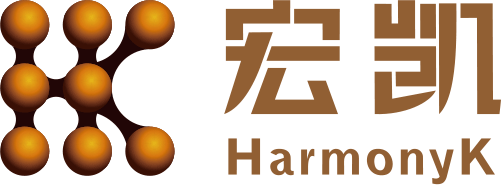Working Principle
The process involves collecting and treating air, processing it into liquid oxygen, and then using the liquid oxygen filling equipment to fill the fracturing device located in the borehole. After sealing the borehole, a special electric igniter (thermal energy) is used to ignite. Some oxygen acts as fuel in the fracturing device, supporting combustion and generating heat. The instant combustion triggers the phase change effect of the liquid oxygen, generating a large amount of gas that acts on the borehole wall, causing the rock to fracture. The oxygen involved in combustion is converted into carbon dioxide and water, while the phase-changed liquid oxygen returns to its gaseous state and is released into the atmosphere.
Equipment Components
The air expansion rock fracturing equipment mainly consists of three major components: the Dewar flask, intelligent filling machine, and fracturing device, as shown in Figure 1. The Dewar flask is used for transporting and on-site storage of liquid oxygen. The commonly used Dewar flask has a capacity of 499L and is provided by professional manufacturers in compliance with relevant national standards. The intelligent filling machine is developed by our company and can automatically adjust the amount of liquid oxygen filled into the fracturing device according to the design plan, achieving precise filling.
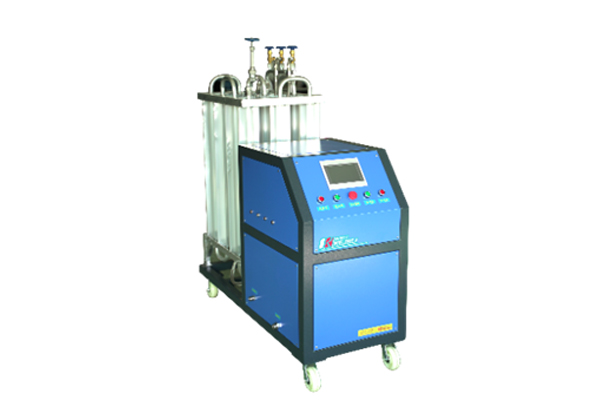
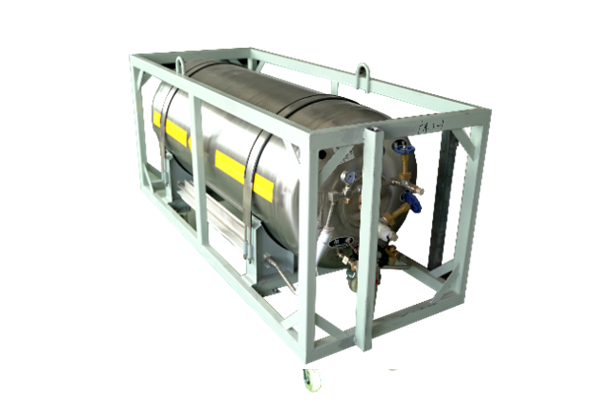
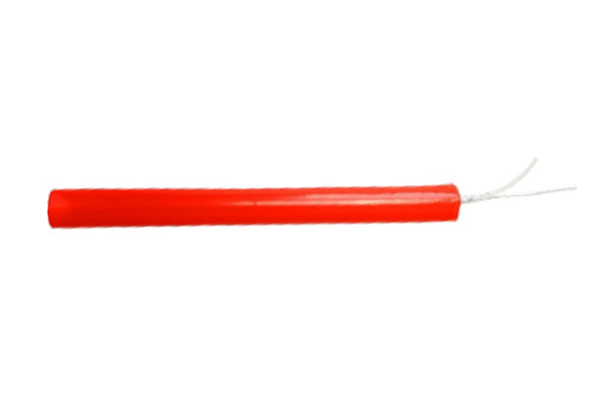
The main components of the flexible fracturing device
The flexible fracturing device is a composite assembly, and Figure 2 provides a schematic diagram of the flexible fracturing device structure. The fracturing device primarily consists of a plastic outer casing, combustion-enhancing medium, filling tube, exhaust tube, and ignition head. The flexible outer casing is designed to store the combustion-enhancing medium and liquid oxygen, and it needs to possess certain flexibility and strength while ensuring no leakage after the introduction of liquid oxygen. The filling tube is typically made of aluminum, and the exhaust tube is made of plastic. The ignition head consists of a resistive wire that, when subjected to electric current, melts and produces sparks, igniting the combustion-enhancing medium within the fracturing device. The combustion of the combustion-enhancing medium is facilitated by the oxygen-assisted combustion.
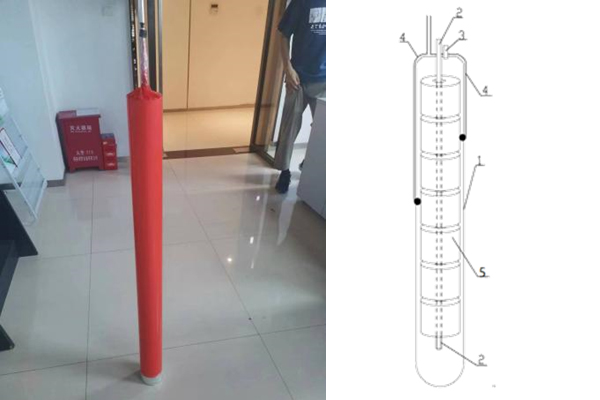
The workflow is as follow
(1) Assembly of the fracturing tool: The combustion medium is threaded onto the filling tube and inserted into the flexible plastic tube. Simultaneously, the resistance wire is fixed in the appropriate position, and the exhaust pipe is inserted. The ends of the plastic outer tube are sealed to ensure that the liquid oxygen does not leak.
(2) Placement of the fracturing tool: The fracturing tool is placed in the blast hole, and the inflation tube, exhaust pipe, and ignition wires are secured and exposed outside the blast hole. The blast hole is then sealed with blasting mud. Figure 3 shows a cross-sectional view of the blast hole with the fracturing tool properly placed.
(3) Filling with liquid oxygen: The intelligent filling machine is connected to both the dewar flask and the filling tube to fill the fracturing tool with liquid oxygen.
(4) Wiring connection: After filling with liquid oxygen, the ignition circuit is connected, and an ohmmeter is used to check for continuity, ensuring that the ignition circuit is unobstructed and that the resistance value meets the design requirements.
(5) Safety precautions: Based on the amount of liquid oxygen filled and the design of the rock fracturing effect, the safety distance is determined, and warning positions are set up, typically no less than 30 meters.
(6) Ignition implementation: After checking the safety situation and confirming it is safe, the ignition command is issued.
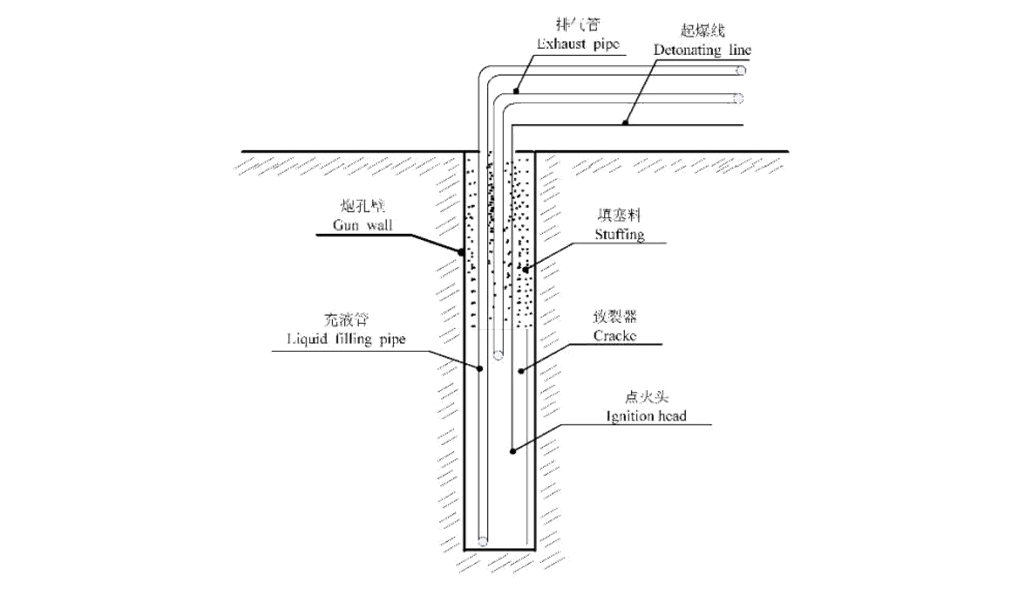
Safety Instructions
All equipment and materials used in the process are free from explosive and easily explosive substances.
The oxygen is filled into the holes using in-hole filling technology, minimizing direct contact between the on-site operators and liquid oxygen.
The absence of explosive materials (easily explosive substances) in the transportation, storage, and operation processes significantly enhances the inherent safety level of rock fracturing operations.
Through testing by a third-party professional company, it has been confirmed that there are no explosion shock waves whether the fracturing device undergoes gas expansion inside the borehole or directly on the ground.
Blast vibration testing results indicate that with a single ignition of 215L liquid oxygen, the vibration generated by gas expansion rock fracturing at a distance of 20m is less than 0.3cm/s.
The noise generated by gas expansion rock fracturing is relatively low, generally around 85dB at a distance of 30m.
Therefore, the air-powered gas expansion rock fracturing method is a safe and environmentally friendly approach that does not involve the use of explosive or easily explosive substances, with low potential for harmful effects and satisfactory rock fracturing results.
